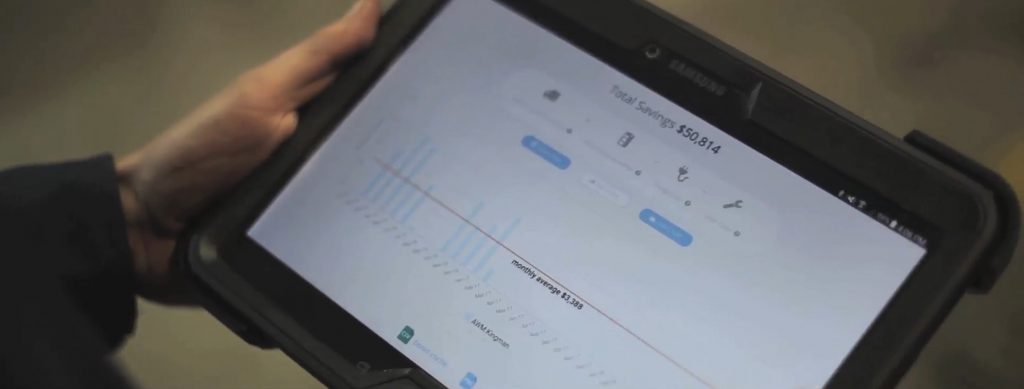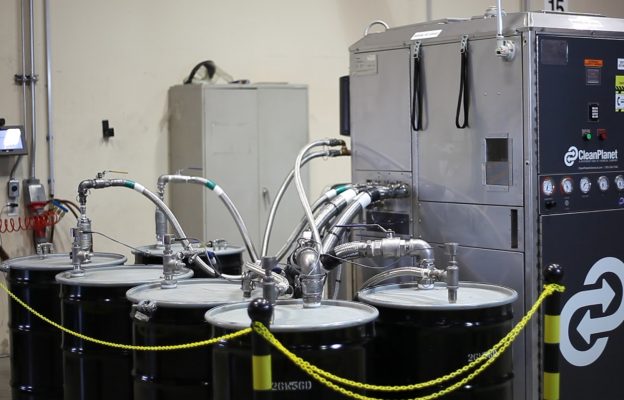Are you looking for a groundbreaking innovation to meet your environmental goals? How about a green technology that could revolutionize the sustainability of your operation?
I’d be willing to bet it doesn’t exist.
In reality, meeting your sustainability goals is about finding incremental efficiencies and reducing waste in your current operations. Businesses worldwide are implementing incremental environmental changes, such as installing LED lighting and energy-efficient HVAC systems or changing production processes that generate less waste. The cumulative effect of these changes is meaningful, and there are plenty of additional opportunities for continued improvements. One place you might not think to look—and where there is often additional environmental value—is your solvent recycling operation.
The flexible packaging industry has long been a leader when it comes to recycling its waste solvent. Both onsite and offsite solvent recycling are common practices in almost every packaging facility in the United States. This is good news because solvent usage can have a major impact on manufacturing sustainability. In fact, according to a study by Carleton University in Canada, a typical pound of solvent that isn’t recycled will have contributed up to 20 pounds of greenhouse gas (GHG) emissions once incinerated. For an average flexible packaging facility, this could mean 1,250 tons of GHG per year, or the equivalent impact of 245 cars driven yearly. This demonstrates the importance of recycling your solvent waste to improve sustainability.
But there’s a problem: solvent recycling technology has been stuck in the past. In a world where all industries are leveraging the power of data and automation, solvent recycling offers very few solutions to better monitor and understand your recycling operation. Is your recycler maximizing yield? Are components starting to fail? Without proper data, it is impossible to know the answer. And, more importantly, it’s impossible to improve. Imagine driving your car but there is no speedometer, no fuel gauge, and no mileage indicator. Adding to the problem is the fact that solvent distillation equipment is not a primary part of the production process. Like an industrial chiller, it is often out of sight and out of mind, at least until a chiller doesn’t do its job and affects your production equipment. Without proper monitoring, you would never know if your solvent recycler is running consistently and efficiently, and you certainly don’t know your true environmental impact.

Tracking the performance of a solvent recycler can be done remotely with a tablet.
The ideal solution is to use a solvent recycling technology that provides you with data tracking or to implement external monitoring tools, such as flow meters or scales. A proper scoreboard will provide you with critical metrics such as uptime, yield, GHG reduction, and waste reduction—all key data points that are essential to improving sustainability. A solvent recycling scoreboard can also show you trends over time, so you can track the effectiveness of these improvements.
Increasing Uptime
When it comes to reaching your sustainability goals, consistency is the key. You own an asset that reduces your waste and overall GHG emissions, but if it isn’t running, what good is it?
It’s key that you ensure you maximize solvent recycler uptime. A variety of factors can negatively impact uptime, including inattention from operators, a lack of feed material, full output receptacles, or maintenance issues. A proper solvent recycling monitoring system cannot only track changes in uptime but can alert you when there is a problem, so it can be remedied immediately.
Maximizing Yield
Yield is defined as the amount of clean solvent your recycler produces as a percentage of the solvent waste that is provided. Most solvent recyclers on the market claim to produce yields of 80% to 99%—impressive numbers. The catch is that the majority of recyclers don’t monitor yield and have no way of letting you know if they are reaching these yield targets. Additionally, yield slips significantly as recycling equipment ages. A small percentage change in yield can have a large impact on the waste reduction associated with your recycling operation. Monitoring and optimizing your yield means buying less make-up solvent and sending less waste for disposal. Every gallon that is recycled matters to your operating and environmental goals.
Green Bragging Rights
The last benefit of using a solvent recycling scoreboard is the most satisfying one. By tracking the uptime, yield—output of your equipment—you can quantify the direct environmental impact your recycling operation has had. A typical modern solvent recycler can reduce greenhouse gas emissions by as much as 3,800 tons a year. That’s the equivalent of planting 57,000 trees.
With consumers demanding environmentally sustainable products, facilities in the flexible packaging industry are looking for environmental efficiencies within their operations. Solvent recycling is already a step in the right direction, but it has plenty of room for improvement. Proper monitoring of your equipment allows you to maximize the uptime and yield of your recycling operation while providing you with transparency that has been lacking. Leveraging this data to improve and optimize your recycling operation is an effective way of improving sustainability. The path to a greener future isn’t traveled with big technological leaps, but rather step by step with small, attainable changes.
Josh Huffman is the director of sustainable solutions at CleanPlanet Chemical, Inc.
